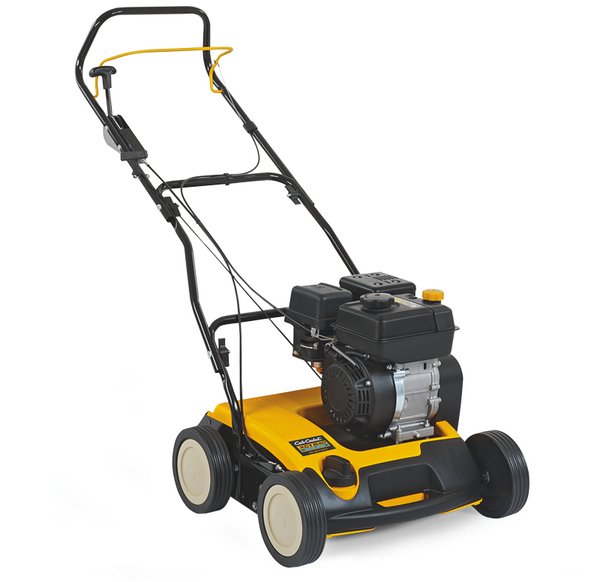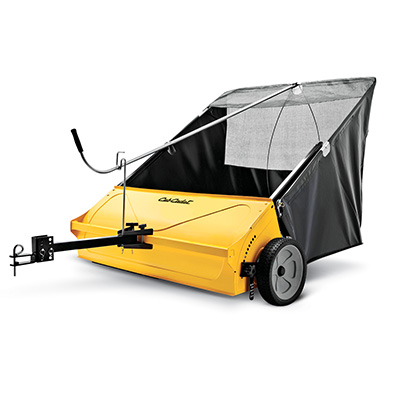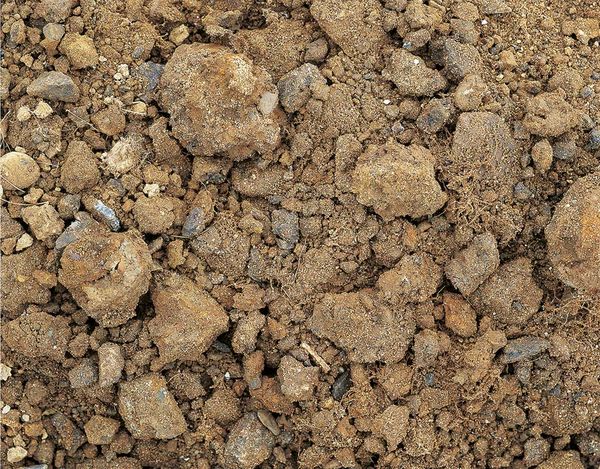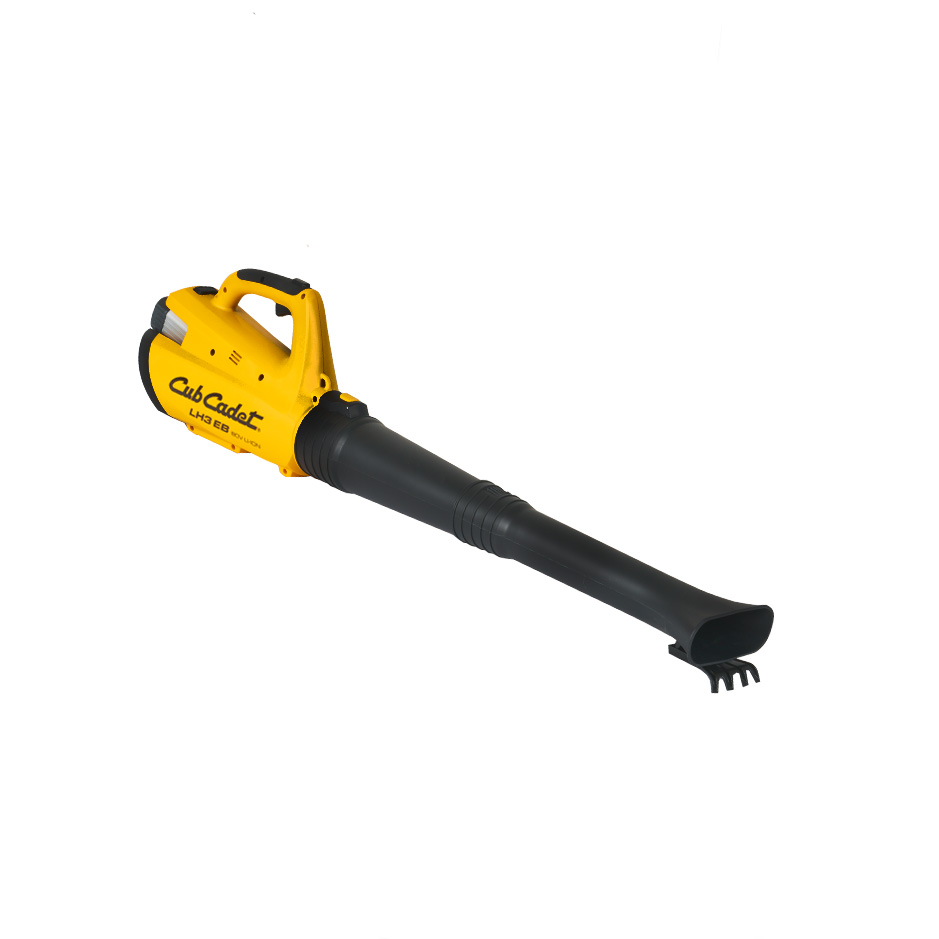Adequate soil aeration of the lawn
In order for the lawn to thrive healthily and be characterized by dense growth, adequate soil aeration is necessary.
Regularly fertilizing and mowing is not enough for a perfect lawn. Consistent aeration of the soil prevents compaction of the surface and consequent matting, which in turn, causes disturbances in the water / nutrient balance. Regular dethatching and, if necessary, aeration is necessary to keep the lawn healthy in the long run, especially if lawns are subject to heavy loads.
Planning Lawn Care
When a lawn awakens from its dormancy in the spring, the first thing amateur gardeners do is mow. The right time to do this is when the forsythia blooms between March and April: when the lawn begins to grow. Clipping should then be carefully removed to prevent the spread of fungi and lawn diseases.
The second step is usually dethatching, which is an integral part of annual lawn care.

Scarifying the lawn
The first cut should be done, followed by the scarifying of the lawn, when the soil temperature reaches 10°C. To do this, the scarifier is run over the area once in the longitudinal direction and once in the lateral direction. The depth of cut is adjustable on many machines. Therefore, care should be taken to ensure that the blades do not penetrate too deeply into the soil so as not to damage the roots of the lawn. Loosened plant remains should carefully be raked away after scarifying, unless the scarifier has a grass catcher. If there are many bare spots, You should immediately reseed the lawn to prevent the growth of undesirable weeds.
Scarifying at the beginning of spring has the advantage that the lawn grows quite vigorously. Thus, it can recover after a short time resulting in a lush green grass when the actual garden season starts.
Ideally, this measure should be carried out again in late summer or more frequently if there is a lot of moss. A simple test shows whether a lawn needs to be scarified: if moss residue or grass sticks to the rake when the lawn is loosely raked, it is time to get the scarifier out of the shed.
Why is aeration of the ground important?
Over time, soil becomes compacted. Loam soil, in particular, tends to become very compressed due to its fine particles. As a result, it can hold less water and a smaller amount of oxygen reaches the roots. If compacted barrier layers form in the soil, rainwater can no longer run off as before creating a risk of waterlogging. Conversely, this prevents capillary action so that water can no longer rise sufficiently from deeper soil layers and thus negatively affect the water supply to the plants. Targeted loosening of the soil creates new cavities that favor fresh lawn growth. Last but not least, soil aeration of the lawn has a positive effect on the decomposition process, making important nutrients accessible to the soil. Fertilizer can also optimally penetrate deeper soil layers.

When is soil aeration useful?
Basically, the growth period of a lawn (between March and October) is particularly suitable for soil aeration. Avoid prolonged periods of rain or drought, which prevent complete loosening of the soil.
Signs that soil aeration might be advisable include bare or mossy patches in the lawn, waterlogging, cracks in the soil, or mechanically inflicted compaction of the soil after use of heavy garden equipment, which can leave ruts.
Lawn thatch is also an indication that the soil is not being adequately oxygenated. If the soil is too compacted, the number of microorganisms that are actually responsible for decomposing organic matter decreases. As a result, felt forms between grass blades, mulch from mowing remains on the grass and mosses colonize.
Why scarify
Dead plant matter, moss and weeds sooner or later lead to the formation of a felt-like carpet, which not only impedes the lawn's aeration but is accompanied by reduced nutrient and water absorption. The blades of a scarifier scratch the surface of the lawn a few millimeters and thus remove weeds and moss while helping to avoid damaging the roots of the lawn. There are different types of equipment for carrying out this task:
- simple hand scarifiers
- manual scarifiers with pendulum blades
- motor-driven scarifiers with electric or petrol drive
Scarifying of even larger lawns is made possible by the powerful Cub Cadet scarifier.
Lawn aeration as an alternative to a scarifier
Less drastic than a scarifier with its blades, a lawn aerator works with spring-loaded tines. These comb through the lawn like a brush but without scratching the surface of the soil. The process is thus far less thorough, but can still remove some of the lawn thatch and moss. This gentler method can be integrated into lawn care as often as desired, whereby experts considers 5-6 treatments per lawn season acceptable.
Lawn aerators are not only available as hand-held devices. Trailed lawn aerators for lawn tractors are also an option, in order to quickly and gently remove moss and lawn thatch from large areas. However, these devices should not be confused with aerators, which operate on a different principle.
How does an aerator work?
Aerifiers either press hollow cylinders into the soil and pull resulting cones out of the ground or displace the surrounding soil as nails. So-called hollow spoons pull the material directly out of the soil, while solid spoons further compact the soil by displacing the soil elsewhere. The ideal spacing between the holes is approximately 10-15 cm, with around 200 holes per m² for effective aeration. To carry out aeration, different devices are available depending on the size of the lawn. For small areas, four-pronged forks or special nail shoes generally are sufficient. For larger areas, motorized aerators are used.
Difference between scarifying and aerating
Dethatching is used with the blades of the device to cut and then remove matted areas on the surface of the soil. This allows more oxygen to reach the grass and reduces the spread of mosses and weeds. Hence, dethatching is not soil aeration in the strictest sense, but it is an essential component for healthy lawn growth.
An aerator is used to punch cavities in the soil in order to alter the soil structure generally to a depth of up to 10-15 inches, helping to improve rainwater runoff and loosenthe soil structure.
While dethatching is carried out in spring (and again in autumn if necessary), aerating can be done all year round. All the same, it is sufficient every 1-3 years for soils that are loose and sandy.
Sanding the lawn
After aerating, fill the voids of aeration by spreading sand. This increases the permeability of the soil, allowing rainwater to penetrate deeper layers. At the same time, the sand stabilizes the voids, acts as drainage, and increases mixing in the soil much like when earthworms distribute sand in the soil. In contrast to aeration, the period for sanding is limited to the months between April to September, when the lawn grows particularly robustly.
Sand can be applied to the surface either with a sand spreader or by hand. It is then spread evenly with a drag net or mixed in with a broom.
Fertilizing the lawn
After mowing, scarifying and aerating the soil, the lawn is finally fertilized with a slow-release fertilizer. At this time, the nutrients penetrate the lawn best. This allows the greenery to recover quickly and can enter the growth phase in the spring well nourished. Organic fertilizers or even applying a thin layer of compost are optimal for this purpose to supply the soil with all the important nutrients.
Watering the lawn
After aeration, it is also recommended to water the lawn heavily. This will permit the water and oxygen to penetrate to the roots of the plants and promote vigorous growth in the following days.


Useful devices for soil aeration of the lawn
There are quite a few devices for lawn aeration. Which one is most suitable, depends mainly on the size of the lawn. Large devices are more powerful, but they are also more expensive. On the other hand, electric or gasoline engines can make gardening easy.
Small areas
- lawn aerator shoes (nail shoes)
- manual lawn aerator roller
- aerator fork or four-prong
- manual scarifier
- lawn rake
Medium areas
- electric or petrol aerator
- electric or gasoline scarifier
Large areas
- gasoline scarifier
- trailed lawn aerator for lawn tractors
In some cases, there are also combination devices where the scarifying blade can be swapped out for aerator needles.
Scarifying and aerating your lawn, as well as regular mowing and fertilizing, are an integral part of lawn care. This helps prevent lawn thatch from forming in the long run, which has a negative effect on growth. Powerful equipment such as scarifiers and aerators or even trailed lawn aerators help make physically demanding work easy, even on small areas.
Gesamtsieger Fachhandelspartner 2018
Bei dem im 2-Jahres-Rhythmus stattfindenden mi Leistungsspiegel bewerten die Fachhändler der Gartengerätebranche alle teilnehmenden Lieferanten in verschiedenen Kategorien. Bewertet werden unter anderem das Liefer- und Reklamationsverhalten, der Service oder die Betreuung durch den Innen- und Außendienst.
Mit Bestnoten in allen Kategorien konnte Cub Cadet in diesem Jahr überzeugen und verdient den 1. Platz im Gesamtergebnis erringen.

Z7 183
Unglaubliche Stärke und unübertroffener Komfort – die perfekte Kombination für echte Profis! Der Z7 183 ist das absolute Spitzenmodell, das deutlich weniger Mähzeit als jedes andere Produkt benötigt. Wer seinem Mäher alles abverlangt, wird begeistert sein.


Gnadenlos Filz und Moos beseitigen
Vertikutieren ist für eine optimale Rasenpflege unerlässlich. Wie gut, dass es dafür den CC V 40 B von Cub Cadet gibt. Er gibt Ihnen zwei Funktionen an die Hand: Rasenlüften und Vertikutieren. Der leistungsstarke Motor bringt die optimale Leistung, um Rasenfilz rückstandslos zu entfernen, damit Licht, Luft und Wasser wieder an Boden und Graswurzeln gelangen.


LAUBBLÄSER LH3 EB
- Turbo-Modus für mehr Power, Sparmodus für mehr Ausdauer
- bietet in jeder Stufe den höchsten Wirkungsgrad

